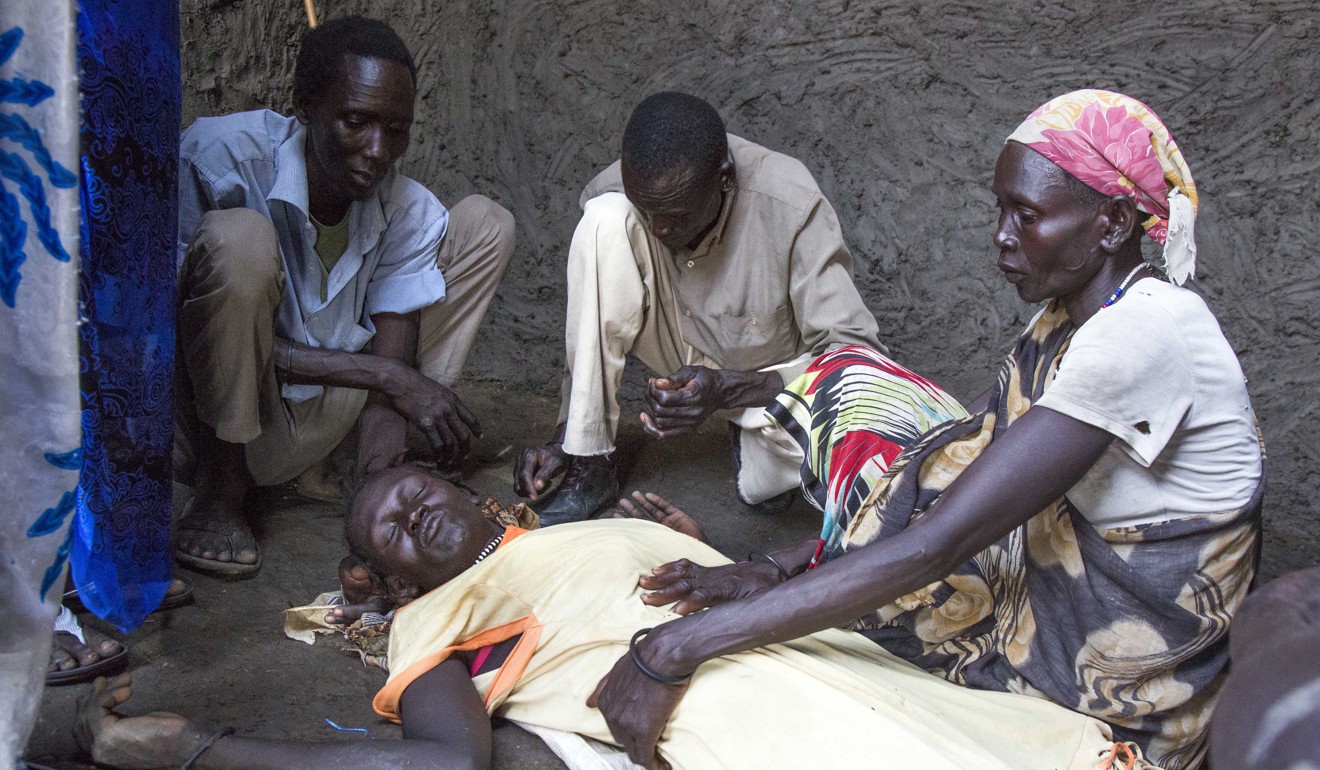
A fifth of global deaths linked to bad diet last year, Lancet study shows
A combination of unhealthy eating in richer countries and inadequate nutrition in poor countries contributed to some 11 million deaths in 2016. Plus: one in seven people live with mental health and substance use disorders
Poor diet – a combination of unhealthy eating in rich countries and inadequate nutrition in poor countries – was linked to one in five deaths worldwide last year, researchers said on Friday.
“Among all forms of malnutrition, poor dietary habits – particularly low intake of healthy foods – is the leading risk factor for mortality,” researchers concluded.

Deaths as a result of a so-called lifestyle disease, diabetes, went up by more than 30 per cent worldwide, to 1.4 million. And more than 1.6 million people in poor countries died in 2016 from diarrhoea caused by contaminated water and food, their study also showed.
While fewer children are dying before their fifth birthday, two million mothers and newborns perished due to complications at birth that rudimentary health care could have largely avoided. Also largely preventable or treatable were lung infections that claimed 2.4 million lives in poor countries.
Four tips for losing weight, from adding vitamin B and omega 3 fats to your diet, to slower eating
On the plus side, humans are living longer than ever before. Global life expectancy last year was 75.3 years for women, and nearly 70 for men.

The Japanese averaged 83.9 years, while citizens of the Central African Republic beat the odds if they make it past 50, a discrepancy of more than three decades between highest and lowest lifespans.
Nearly 55 million people died in 2016, while 129 million were born, leaving a net gain of 74 humans on the planet.
Experts fear return of Hong Kong’s No 1 killer, TB, amid rise in visitors from disease hotspots and drug resistance
Aids and tuberculosis each claimed more than a million lives, while malaria killed over 700,000 people, according to half-a-dozen studies published jointly in The Lancet, a leading medical journal.
But trend lines have declined over the last decade for these communicable diseases.

Nearly three quarters of all deaths in 2016 were caused by non-communicable diseases, with heart disease related to restricted blood flow – 9.5 million deaths – the single biggest killer of all.
That’s an increase of nearly 20 per cent in a decade.
Cancers – led by lung cancer – are also on the rise, accounting for nearly nine million deaths in 2016, 17 per cent more than in 2006. Tobacco is blamed for 7.1 million of those fatalities.

Deaths attributed to conflict and terrorism – notably in North Africa and the Middle East – exceeded 150,000 in 2016, a jump of 140 per cent compared to a decade earlier.
Alcohol and drug use accounted for some 320,000 deaths, including 86,000 for opioids. Opioid abuse – mostly pharmaceutical – in the United States has reached epidemic proportions.
Singapore’s war on diabetes aims to save lives – and limbs – in a state where the disease causes four amputations a day
“We are facing a triad of trouble holding back many nations and communities – obesity, conflict and mental illness, including substance abuse disorders,” said Christopher Murray, director of the Institute for Health Metrics and Evaluation at the University of Washington in Seattle, which centralised and analysed the millions of data points used the studies.
The studies, drawing from the input of 2,500 experts, also showed that one in seven people – 1.1 billion – are “living with mental health and substance use disorders”.
Major depression ranked among the top 10 causes of ill health in all but four of the 195 countries and territories covered.
Mental health services are chronically underfunded in most nations, especially in the developing world.

In China, only six per cent of people coping with common mental illnesses such as depression or anxiety disorders or with substance abuse and dementia seek out a doctor, earlier research has shown.
Less than one per cent of national health care budgets in China and India is allocated to mental health.
The global population afflicted with Alzheimer’s or Parkinson’s disease stood at 2.6 million worldwide in 2016, a more than 40 per cent surge from only a decade earlier.
How a Hong Kong raw vegan marathon runner prepares for a race, and why she began winning after giving up meat, eggs and dairy
One bright spot was the better-than-expected health performance of several countries – including Ethiopia, the Maldives, Nepal, Niger, Portugal and Peru that made outsize improvements in relation to national wealth, or GDP.
“These exemplar countries may provide information on successful policies that have helped to accelerate progress on health,” said Murray.
In several cases, that headway stemmed in part from the roll-out of antiretroviral treatments for HIV/Aids.

.png?itok=arIb17P0)